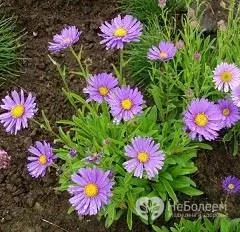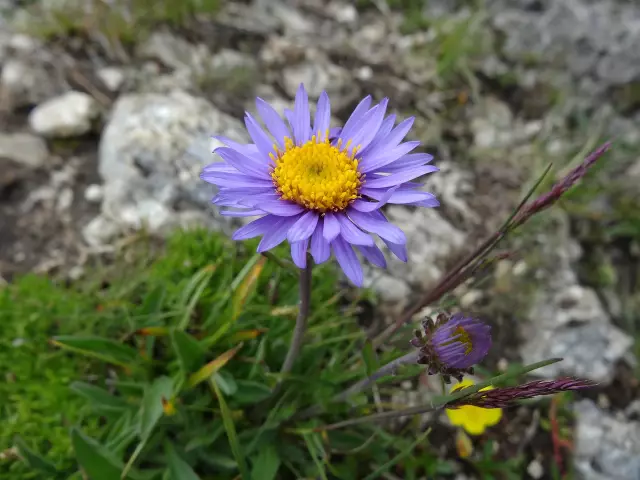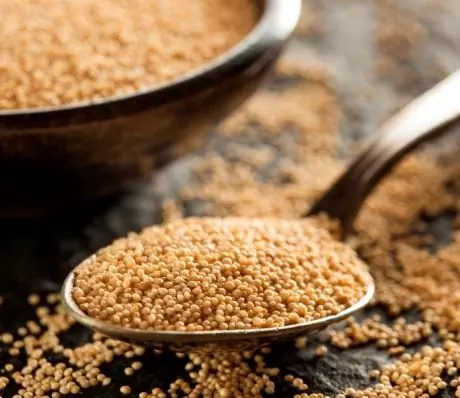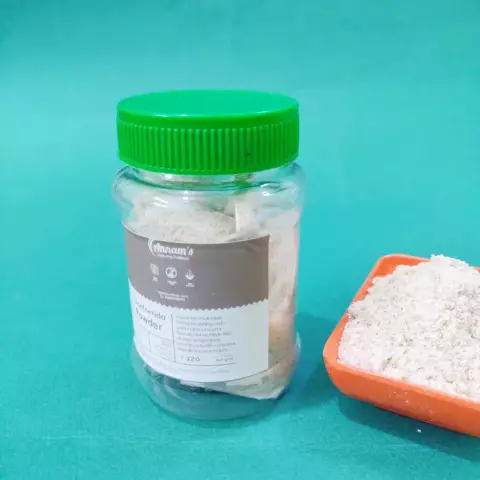- Author Rachel Wainwright [email protected].
- Public 2023-12-15 07:39.
- Last modified 2025-11-02 20:14.
Alpine aster
Instructions for use:
- 1. Chemical composition
- 2. Useful properties
- 3. Indications for use
- 4. Contraindications
- 5. Home remedies

Alpine aster belongs to the Aster family (Compositae). This is a perennial plant growing in the south of the Urals, Western Siberia, the Caucasus, found on rocks, gravelly and stony soils, meadow slopes.
Alpine aster stems, covered with white hairs, reach 25 cm in height. The flowers of the plant are outwardly similar to garden chamomile, have a blue-violet color, are collected in large baskets and are located at the top of the plant.
For medicinal purposes, all aerial parts of the plant are used: flowers, leaves, stems. Medicinal raw materials are harvested during the aster flowering period, in July and August: they are completely cut off, laid out in one layer and dried in a dryer.
Chemical composition
The plant contains biologically active substances: coumarins, flavonoids, saponins.
Beneficial features
Alpine aster has antipyretic, anti-inflammatory and expectorant effects.
Indications for use
Both internal and external use of the Alpine aster is effective.
It is noticed that when applied to the skin, the tincture relieves itching, inflammation that occurs with dermatoses of various origins.
Inside, infusions and decoctions of plants are taken in case of problems with the gastrointestinal tract, colds, flu, tuberculosis, eye diseases, joint pains, tendon diseases.
Contraindications
The use of alpine asters is contraindicated in case of hypersensitivity to the plant.
Alpine aster home remedies
Due to its beneficial properties, alpine aster is widely used in folk medicine.
There are several recipes for making medicinal infusions:
- 1 tablespoon of dry medicinal raw material is brewed with 200 ml of boiling water, kept for 40 minutes, filtered. They drink such an infusion for gastrointestinal disorders, colds and other indications, 1 tablespoon 3 times a day before meals;
- 1-2 tablespoons of aster herb are poured into 0.5 liters of boiling water, boiled for 3 minutes and insisted for 20 minutes. Take 100 ml 3 times a day before meals.
For external use, the infusion is prepared in the second way and is used to treat tuberculosis of the skin, boils, diathesis and other skin inflammations. The resulting product is applied throughout the day with cotton swabs to the affected skin areas and kept for 5-10 minutes. Treatment continues until the condition improves.
The use of the plant for medicinal purposes should not replace the drug therapy prescribed by the doctor.
Information about the drug is generalized, provided for informational purposes only and does not replace the official instructions. Self-medication is hazardous to health!






